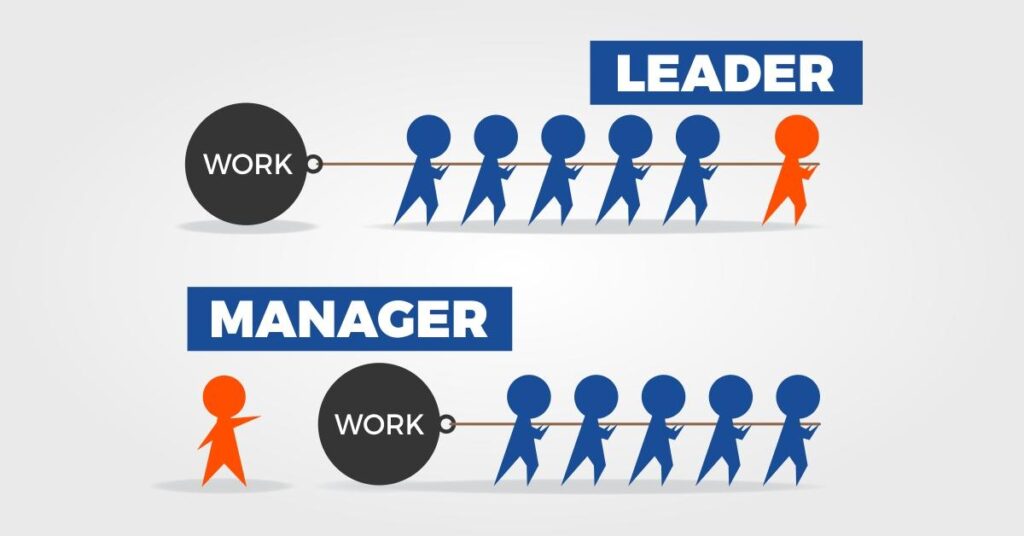Introduction
In the realm of organizational dynamics, the terms “manager” and “leader” are often used interchangeably, but they represent distinct roles with unique responsibilities and qualities. To foster a better understanding of these crucial positions, it’s essential to explore the differences between a manager and a leader. In this article, we will delve into the key differentiators and shed light on their respective contributions to the success of any business.
The Manager’s Role
Managers play a pivotal role in any organization. They are responsible for overseeing day-to-day operations, ensuring tasks are completed efficiently, and that the team is aligned with the company’s goals. Let’s break down the core aspects of a manager’s role.
Planning and Organization
Managers are chiefly involved in planning and organizing. They set clear objectives, create schedules, and allocate resources to meet the company’s goals. This level of strategic thinking is essential for optimizing processes and achieving desired outcomes.
Monitoring and Controlling
Monitoring performance and controlling processes are vital managerial tasks. Managers track progress, identify issues, and take corrective action when necessary. This aspect of management is integral to maintaining operational efficiency.
Problem-Solving
Managers are often the go-to individuals when problems arise. They are expected to assess issues, develop solutions, and ensure that the team can continue working effectively. Problem-solving is a critical skill for managers.
The Leader’s Role
Leaders, on the other hand, are instrumental in guiding their teams towards a shared vision and fostering innovation. Their responsibilities extend beyond the day-to-day operations. Here are the key facets of leadership.
Vision and Inspiration
Leaders are visionaries who inspire their teams with a compelling vision of the future. They instill a sense of purpose and motivation, encouraging team members to work towards a common goal.
Empowerment and Development
Leaders empower their team members, enabling them to take initiative and make decisions. They focus on personal and professional development, fostering a culture of continuous learning and growth within the organization.
Emotional Intelligence
Leaders possess a high degree of emotional intelligence. They understand and connect with their team members on a personal level, creating a supportive and collaborative environment that promotes trust and camaraderie.
Key Differences
Now that we’ve outlined the core responsibilities of managers and leaders, let’s delve into the key differences between the two roles.
Focus
Managers primarily focus on tasks and processes, ensuring that everything runs smoothly according to established procedures.
Leaders concentrate on people, nurturing talent, and inspiring innovation. They emphasize personal growth and development.
Approach to Authority
Managers typically hold positional authority. They derive authority from their titles and roles within the organization.
Leaders earn authority through influence. They gain the respect and trust of their team members, who willingly follow their guidance.
Response to Change
Managers tend to be more resistant to change as their primary goal is stability and consistency.
Leaders are change agents. They embrace change as an opportunity for growth and adaptation to evolving circumstances.
Communication Style
Managers often employ a directive communication style, giving specific instructions and feedback.
Leaders employ a more inspirational and inclusive communication style, encouraging open dialogue and participation.
Striking a Balance
Recognizing the complementary nature of the manager and leader roles, many successful professionals aim to strike a balance between the two. This approach, often referred to as “managing as a leader” or “leading as a manager,” leverages the strengths of both roles for optimal results. Here’s how you can achieve this balance:
Self-Awareness
Start by understanding your own strengths and weaknesses. Recognize whether you naturally lean more towards a managerial or leadership style. Self-awareness is the first step in finding the right equilibrium.
Context Matters
Consider the context and the specific needs of your team or organization. There are times when efficient management is required, and other instances when visionary leadership is essential. Adapt your approach accordingly.
Develop Versatility
Strive to develop versatility in your management and leadership skills. This might involve enhancing your problem-solving abilities as a manager or refining your emotional intelligence as a leader.
Continuous Learning
Both managerial and leadership skills can be honed over time. Invest in your personal and professional development to become a well-rounded professional who can flexibly adapt to changing circumstances.
Conclusion
In the corporate landscape, both managers and leaders play indispensable roles, but they contribute differently to the organization’s success. Understanding the distinctions between a manager and a leader is vital for effective talent management and team development.
A harmonious blend of these roles can drive a company towards excellence. The most successful individuals in leadership positions recognize the value of mastering both roles. They can manage tasks efficiently while simultaneously inspiring and developing their teams to reach new heights.
It’s not a question of choosing between being a manager or a leader but about knowing when to apply the right skills at the right time. Striking this balance will ensure your success in guiding your team or organization toward its objectives and navigating the ever-evolving landscape of the modern workplace.
In conclusion, understanding the fundamental distinctions between a manager and a leader is vital for professional growth and organizational success. By embracing the strengths of both roles and knowing when to apply them, you can become a versatile and effective leader in any business setting. The key to excellence lies in your ability to adapt, inspire, and guide your team toward a prosperous future.






